He groans in anguish; while the growling pack, Blood-happy, hang at his fair jutting chest, And mark his beauteous chequered sides with gore. – The Seasons by James Thomson – Autumn – p133
An old postcard from the League for the Prohibition of Cruel Sports. It is undated, but is probably from circa 1924 – 1927.
The demise of the Humanitarian League came about as a result of the first world war and in 1919 it disbanded. However, as Salt wrote in 1930:
“Its long effort to ameliorate certain sports was not in reality wasted and has now been made evident by the success of a later League for the Prohibition of Cruel Sports“.
This League, now known as the League Against Cruel Sports was founded in 1924 by former Humanitarian League members Mr Henry Brown Amos (1869-1946) and Mr Ernest Bell (1851-1933). For Salt, who recognised that the Humanitarian League in its day was largely a forlorn hope but with far reaching effects, there would have been satisfaction in knowing that we are now so close to “taking a stronghold of the enemy” with the impending ban on hunting with dogs. – Simon Wild quoting – Henry S. Salt.
A much appreciated item in our Ernest Bell Library.
On the reverse of this postcard there is a poem by Norman Carruthers Gould – born 1882 – d?.
We do not yet know the identity of the artist behind the image on the card – but we suspect that it is the work of – Alexander (Alec) Carruthers Gould – who was Norman’s elder brother.
Alec illustrated several of Ernest Bell’s animal rights books & magazines. The earliest example we have dates from 1895/6.
Both Alec & Norman were sons of the Victorian caricaturist Sir Francis Carruthers Gould. Wiki.
Ernest Bell commissioned work from some wonderful artists & writers!
———-
A second card – also with lines of verse from the poem ‘Red Exmoor’ by Norman Carruthers Gould. The reverse is blank.
———-
The header from an issue of Cruel Sports – the monthly magazine of the League for the Prohibition of Cruel Sports.
The Ernest Bell Library holds several runs of this magazine.
———-
* In this post I have included pieces from 2 other sites which we run – our current main website – http://www.henrysalt.co.uk/ & an old but much loved project which is overdue for a makeover – http://www.ordergoldenage.co.uk/ *
The Humanitarian League & The League for the Prohibition of Cruel Sports
Two of our favorite Leagues!
We are going to repeat the quote here – as it is so important historically!
The demise of the Humanitarian League came about as a result of the first world war and in 1919 it disbanded. However, as Salt wrote in 1930:
“Its long effort to ameliorate certain sports was not in reality wasted and has now been made evident by the success of a later League for the Prohibition of Cruel Sports“.
This League, now known as the League Against Cruel Sports was founded in 1924 by former Humanitarian League members Mr Henry Brown Amos (1869-1946) and Mr Ernest Bell (1851-1933). For Salt, who recognised that the Humanitarian League in its day was largely a forlorn hope but with far reaching effects, there would have been satisfaction in knowing that we are now so close to “taking a stronghold of the enemy” with the impending ban on hunting with dogs. – Simon Wild quoting – Henry S. Salt.
The original Humanitarian League was resurrected in Hong Kong in 2013
The League for the Prohibition of Cruel Sports (later called the League Against Cruel Sports) was founded in 1924. It began in Morden, (a London suburb) after Henry Brown Amos (partial at the bottom of this post) had raised a protest against rabbit coursing; he was successful in motivating support and eventually managed to achieve a ban. This encouraged him to organise opposition to other forms of blood sports and so, along with Ernest Bell, he established the League for the Prohibition of Cruel Sports.
Although many blood sports such as bull, bear and badger baiting and cock fighting had already been outlawed at the time, animal protection laws only applied to domestic and captive animals. With the RSPCA unwilling to take action against hunting, Amos and Bell identified a clear need for an organisation which would campaign against what it classified as cruel sports.
The League campaigned vigorously to end activities that inflicted suffering to animals in the name of sport, in particular hunting with hounds and the use of terriers on foxes and badgers.
———-
About Henry Brown Amos
Henry Brown Amos (1869-1946)
It is with deep regret we record the passing, on the 22nd October, of Mr. Henry B. Amos.
Mr. Amos, who was one of the most widely known humanitarian workers in the country, was born on the 24th May, 1869, and first became interested in vegetarianism when a boy, in East Linton, about 1886. His connexion with humanitarian movements was a long one. He worked in London for many years, first in the offices of the then Vegetarian Federal Union along with Mr. Arnold F. Hills, and was the Hon. Secretary of the Vegetarian Cycling & Athletic Club about the year 1895. He was associated with Mr. S.H. Beard in the Order of the Golden Age (at Paignton) from 1901 to 1903, and when Mr. Albert Broadbent was Secretary of The Vegetarian Society (from 1895 to 1912) he managed the Society’s stores for a period and succeeded Mr. Broadbent as Secretary of the Society during 1913 and 1914.
.
In 1924 he was Secretary of the Rodeo Protest Committee, in Leeds, where a successful campaign was launched for the abolition of Rodeo exhibitions. During the following year he helped to found and organize the League for the Prohibition of Cruel Sports (now the League Against Cruel Sports) and was the Editor of its official magazine during the early years of its existence. He had been a member of The Vegetarian Society for 56 years and was recently elected a Vice-President in recognition of the valuable work he had rendered to the cause.
Mr. Amos’s favourite slogan was “The utmost for the highest,” and if we had to assess the qualities which Mr. Amos possessed we could not do better than quote the words of the Rev. F. Hankinson, the Unitarian minister who conducted the funeral service at Golders Green. He said “He had an independent mind and if he felt a thing was right he would uphold his views against opposition. Such men are often called reformer, rebel, crank, agitator, and may not always be easy to work with or live with, but they achieve, they fight for the right, and in the end their labours succeed and benefit the world and humanity.”
From The Vegetarian Messenger and Health Review of December 1946
———-
Henry Brown Amos’ 1933 article about Ernest Bell
Ernest Bell: An Appreciation
Cruel Sports, 1933
The passing of Ernest Bell, announced in our last issue, is an event of no ordinary significance to the Humanitarian-Vegetarian movements, for no one, in our time, has loomed so largely in both as the genial, generous soul now universally acclaimed as “The” animals’ friend. Mr. Bell had many interests — from music and dancing to publishing and languages — but the dominating interests of the last forty years of his life were undoubtedly kindness to animals and simple living. He was probably as keen on the latter as the former, which, he always said, was the only satisfactory solution of animal cruelties. It is interesting to note too, that it was through food-reform that he was led into animal-reform. The introduction took place in 1874, whilst he was a student at Cambridge, through reading a pamphlet by Dr. T. L. Nichols, entitled “How to Live on Sixpence a-Day.” He was much benefited by the humane diet, and his growth to a fuller recognition of the kinship of all life was swift and basic.
Probably no one has ever been so closely and prominently connected with more vegetarian-humanitarian societies or given more lavishly to them of time, thought, and money than Ernest Bell, who has been President, Chairman, Hon. Treasurer, member of Committee, etc., of more groups than we can recall. Equally certain is it that no one ever helped more individual workers and societies in their struggling early days, and one of the greatest joys of his life was to see of the fruits of this co-operation, and to rejoice when they were able to stand on their own feet.
Probably Mr. Bell’s greatest contribution to his day and generation was his thirty odd years’ editorship of “The Animals’ Friend,” in which he dealt with every phase of the twin movements freely and without fear of censorship, and his twenty years’ Hon. Treasurership of the Humanitarian League, where he mixed with many of the leading humanists of the day and published pamphlets and books by eminent writers that have had an appreciable influence on the thought of our time. In both these connections he printed and distributed, largely at his own expense, hundreds of thousands of leaflets and tracts. But no opportunity was missed in any connection, either abroad or at home, to break a lance with any animal cruelty that came to his notice.
Perhaps the happiest memories that most of his friends will have of Mr. Bell will be of garden parties or of summer schools and socials, where he would teach the novices and the heavy footed the intricacies of a new dance, or himself spin “the light fantastic” with a merry friend. To see him, dressed in a velvet jacket, white waistcoat, satin knickerbockers, hose, and bright buckled shoes, tripping it thus gaily with a charming partner was a revelation in the poetry of motion that one can never forget.
But “E. B.” had another side to his nature, and other notable memories are associated with walks and talks in the quiet of Nature and the hush of the woods. Here he would unburden himself of his ideas on the deeper issues of life and death in humans as well as animals, and always with a prescience that illuminated. In whatever way, therefore, we look at Ernest Bell we must recognise a remarkable man, less a leader, perhaps, than a follower, but most of all the perfect companion who stood shoulder with his fellows, cheering, counselling, and inspiring them in the method of peaceful penetration rather than in the more disturbing method of blazing a trail or vindicating a principle. The world was his parish, and we can hardly hope to see his like again.
Henry B. Amos
———-
How do we secure these items?
The Ernest Bell Library is in touch with more than 300 specialist dealers around the world.
……so we have at least 300 pairs of eyes continuously looking for examples of quirky ephemeral material such as these!
Books & metal items often survive fairly well.
Magazines, posters, booklets & leaflets rarely survive.
The Ernest Bell Library is actively building a collection of examples of marketing activities related to: –
-
veg(etari)an products.
-
veg(etari)an books & other publications.
-
veg(etari)an organisations.
-
veg(etari)an businesses.
-
animal rights organisations.
-
animal rights publications.
-
humanitarian organisations.
-
humanitarian publications.
-
rambling clubs run by members of the above groups & related publications.





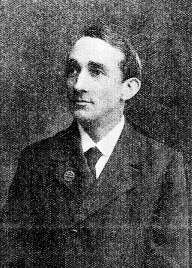
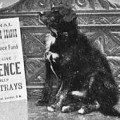
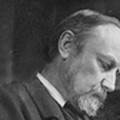
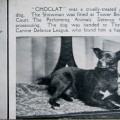
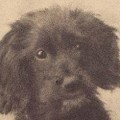
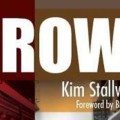
No Comments